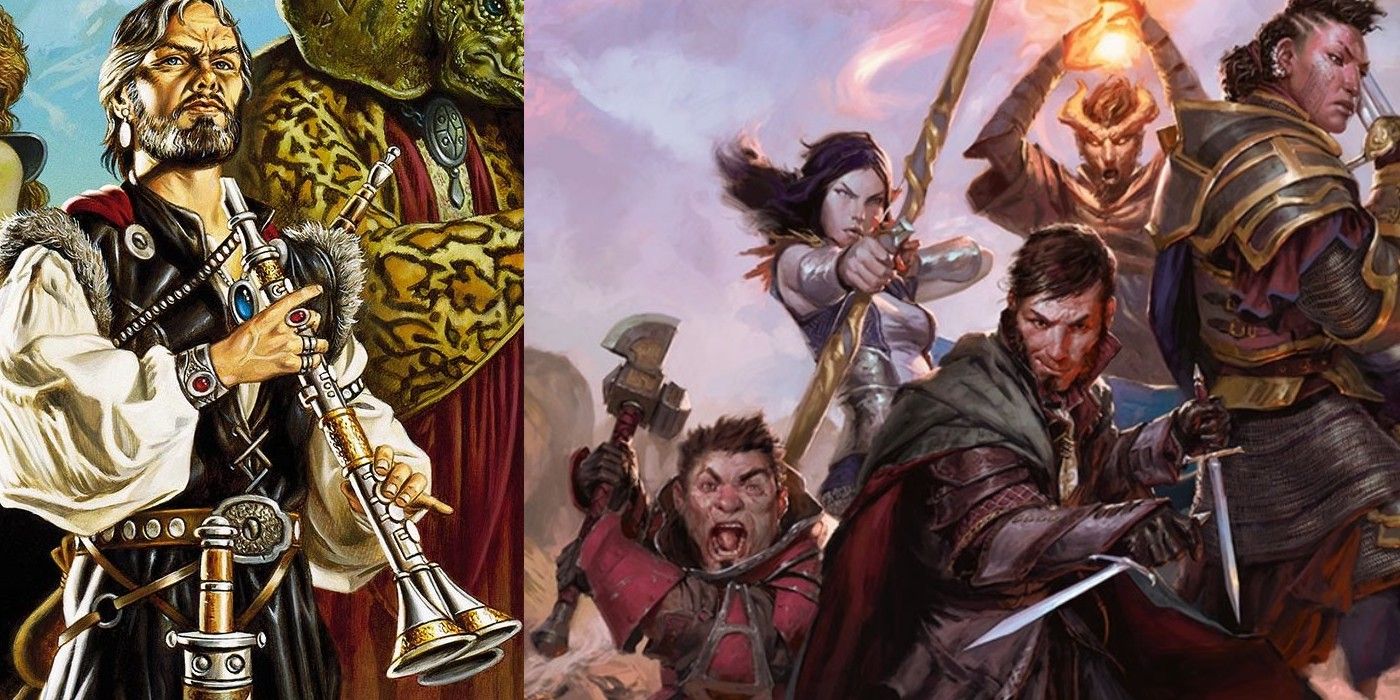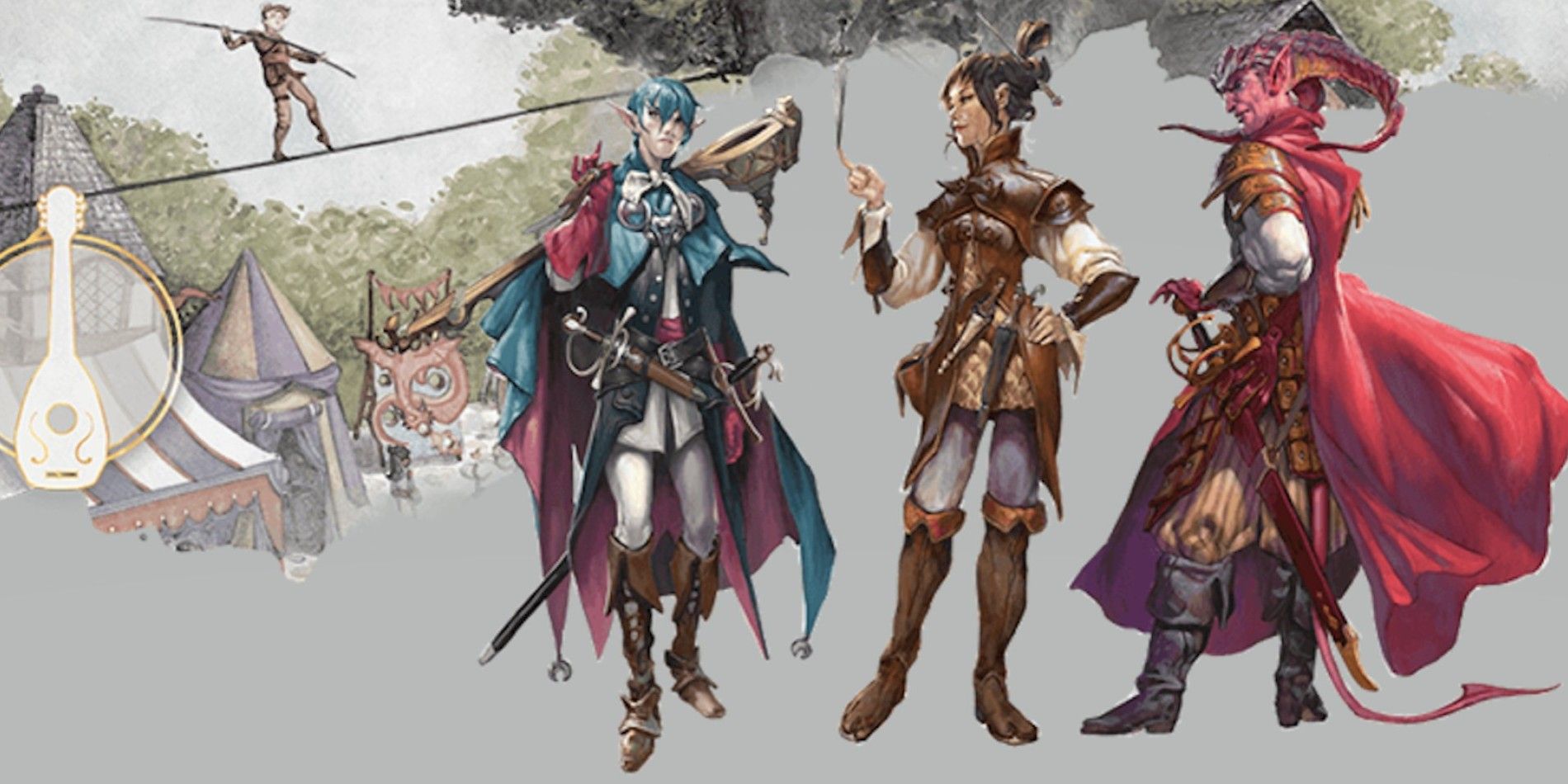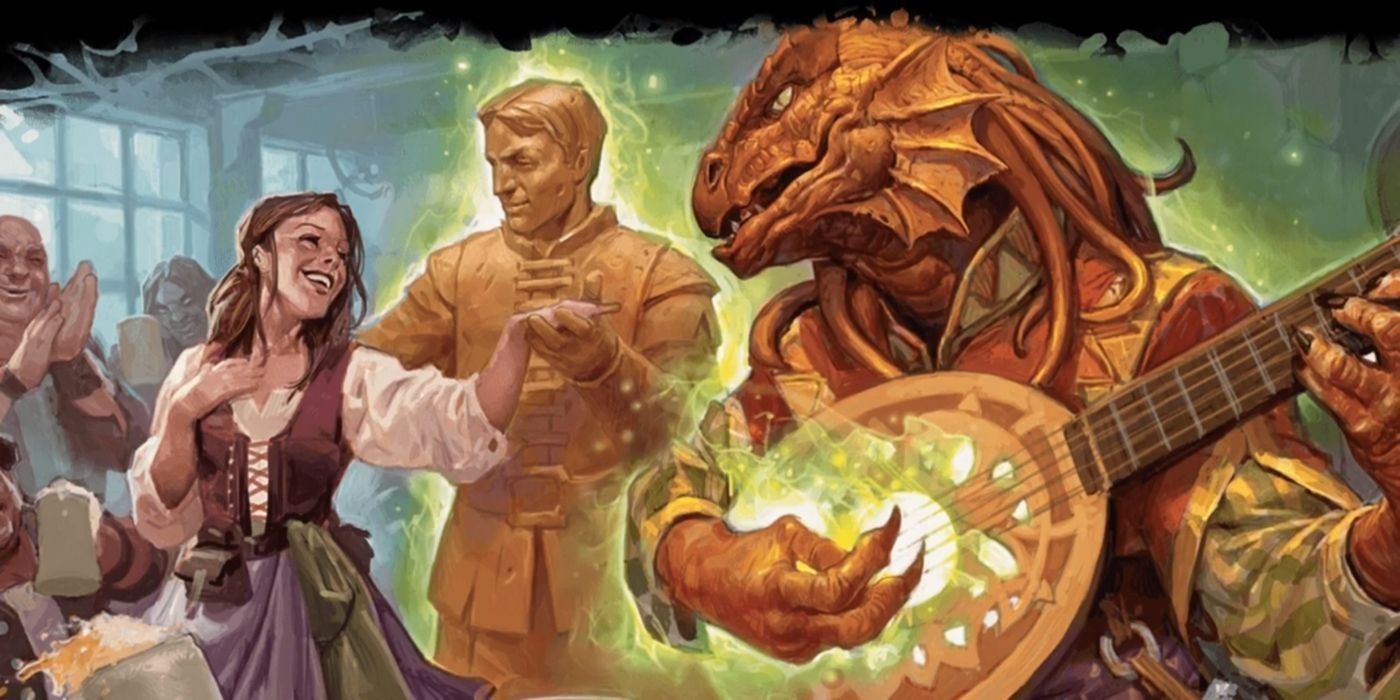The bard has been an oddity throughout the history of Dungeons & Dragons, beginning as a class with steep requirements for some questionable rewards, and transitioning to a jack-of-all-trades support class. D&D's fifth edition introduced a different take on the Bard as a full spellcaster with several other notable perks, making it one of the strongest classes in D&D (and arguably overpowered) with the right builds. The current bard remains versatile, but no longer at the expense of power, making it possible for an optimized bard to outdo many other classes at their own specialty. Along with leveraging the innate abilities of the class and choosing an appropriate sub-class, higher level bards can choose from other classes’ spell lists using the Magical Secrets ability to fill any role a party could require.
First edition Advanced Dungeons & Dragons’ bard was a variant druid that functioned similar to a third edition D&D prestige class, requiring exceptional statistics as well as prior experience in the fighter and thief classes before becoming a bard. The second edition bard became a base class which combined several thief abilities, fighter weapon proficiencies, and limited spellcasting from the wizard spell list. The bard of third edition D&D followed this pattern, featuring skills similar to a rogue along with arcane spells, which notably included some healing, normally restricted to divine casters like clerics. Fourth edition D&D introduced roles for each class, and the bard was a natural fit for leader, the role focused on healing and enhancing the party.
In fifth edition D&D bards gain full caster progression like other dedicated spellcasting classes such as wizard and cleric, eventually accessing powerful level 9 spells, including the extremely useful spell Foresight as a class spell. They retain the iconic bardic inspiration ability which allows them to improve their allies, but the current version of the bard is much more than a simple support character. Rather than dabbling in several fields, the bard can excel at its chosen role, which can be nearly anything the player wishes it to be.
5e D&D Bards Borrow Spells To Become Superior Warriors Sooner
The ranger is D&D’s iconic ranged attacker, but a bard can take on this role with ease by borrowing from the ranger’s spell list using the Magical Secrets feature. The powerful fifth level ranger spell Swift Quiver allows the caster to make two ranged attacks as a bonus action. The ranger class has a slower spell progression than bard and does not gain access to level five spells until class level 17. With Magical Secrets, a bard can add Swift Quiver to their spell list at level 10, seven levels earlier than when a ranger could cast the spell. Combined with the College of Valor subclass which grants a bard the same extra attack feature as the ranger, a level 10 bard can consistently fire four ranged attacks per round.
When used in conjunction with the Sharpshooter and Crossbow Expert feats, this spell makes a ranged bard deadly. The bard can either use a heavy crossbow for the superior damage dice, as their bonus action attacks from Swift Quiver are not restricted to the hand crossbow, or a longbow along with Bracers of Archery for more consistent average damage. Banishing Smite, a paladin spell that is not restricted to melee weapons, can also provide added damage for a ranged bard, possibly sending the enemy to another plane of existence in the process.
With a similar approach, a bard can become a competent melee specialist. A melee bard can also use the College of Valor’s armor and weapon proficiencies, as well as its extra attack, and take the feats Polearm Master and Great Weapon Master for added damage and a bonus action attack. Rather than borrowing from ranger spells, a melee-focused bard can use Magical Secrets to obtain the Haste spell from the wizard spell list for an additional attack. Paladin spells are also of benefit for this build, and unlike Banishing Smite, others like Staggering Smite and Blinding Smite do require the use of a melee weapon. A melee-oriented bard can access powerful smite spells at lower level than a paladin, and the superior spell progression of the bard means they will have more uses of these devastating spells as well, giving them an edge over the holy warriors whose spells they borrow.
Bards Combine Versality With More Power Than Ever In 5e D&D
A melee-focused College of Valor bard does incur some risk by putting themselves on the front line, but the difference between a bard and a fighter amounts to 21 hit points at level 20, when using the fixed HP progression rules. The armor class of the best medium armor, when combined with a good dexterity score, is only one point lower than heavy armor’s full plate, so the bard’s ability to self-heal more than makes up for the minor difference in hit points and armor class. Acting as a healer is a role a bard can take on as a focus, or in addition to another build specialization. Bards already receive several key healing spells as part of their innate class list, including Cure Wounds and Healing Word. The Magical Secrets feature can allow a bard to add the powerful level 6 Cleric spell Heal, or the level 9 spell Mass Heal, to bolster their healing abilities. Prior to the errata, many healing-oriented bards also benefited from learning the level 2 druid spell Healing Spirit, though it is of lesser value in its revised form.
Even without any specialized build in mind, all bards are highly skilled characters, receiving proficiency in three skills of their choosing, second only to the rogue, and the ability to select any skill in the game for those trained skills. Bards gain the Jack Of All Trades feature at level 2, which makes them essentially “half proficient” in all skills and ability checks they are not trained in, including initiative rolls. Bards also receive Expertise in two skills at level 3, and another two at level 10, doubling their proficiency bonus with those skills. A bard who wishes to focus further on skills can choose the College of Lore subclass, which grants proficiency in an additional three skills. The bard can effectively circumvent the need for a party rogue by selecting a background that grants proficiency in Thieves Tools, such as Urchin or Criminal, and Expertise in skills like Perception and Investigation make them unlikely to miss any traps or ambushes that the party might encounter.
Due to the versatility and power of the fifth edition D&D bard, nearly any archetype can be filled using this single class. A devastating melee combatant smiting their foes could be a bard as easily as a paladin, just as a bard can snipe foes from a distance as effectively as a ranger. Choosing the right spells can bolster the bard’s already powerful spell list to allow them to fill the role of a party healer, while a focus on arcane spells lets a bard fill the niche normally reserved for a wizard or sorcerer. The D&D bard is no longer a jack of all trades, master of none, but rather, a master of nearly any trade the player wishes to focus on and build around, making it one of the most powerful classes in Dungeons & Dragons.



